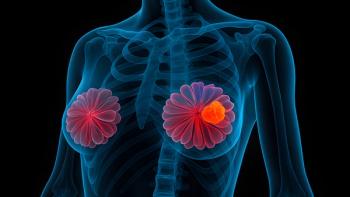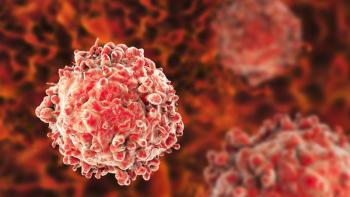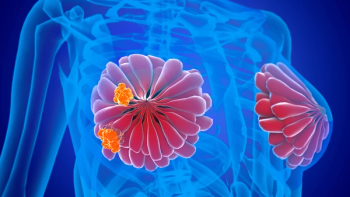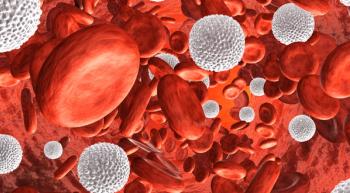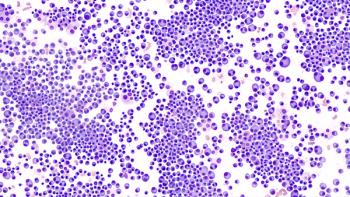
An NP’s Perspective: Supporting Derm Toxicities in Breast Cancer as a Team

La-Urshalar Brock, FNP-BC, CNM, describes tactics for managing dermatologic AEs in patients with breast cancer as part of a multidisciplinary care team.
Management of dermatologic toxicities such as hand-foot syndrome relies on patient-clinician rapport and a strong sense of collaboration in the multidisciplinary care team, said La-Urshalar Brock, FNP-BC, CNM, a nurse practitioner who specializes in breast and gynecologic cancer and survivorship at the Winship Cancer Institute at Emory University in Atlanta, Georgia.
In an interview with Oncology Nursing News, Brock shared that some of the most common dermatologic adverse effects (AEs) that occur within the context of breast cancer treatment are acne and rash.
Notably, capecitabine (Xeloda) can be associated with hand-foot syndrome. Symptoms of hand-foot syndrome can escalate to the point where patients can struggle with daily tasks, possibly necessitating a treatment break or dose reduction. Brock shared that patients should be advised to report symptoms when the issue starts rather than when it escalates, instead of trying to “tough it out."
As a nurse practitioner, Brock highlighted the importance of collaborating on dose reduction with an attending physician and understanding when to refer patients to dermatology.
Oncology Nursing News: What dermatologic toxicities are typical across common breast cancer treatments?
Brock: What we would normally see for patients with breast cancer with adverse events when we’re looking at skin are usually rashes for the most part, and some acne. Quite a few patients will talk about seeing acne or a facial rash. We also see mild to moderate rashes on their body. It could be arms, trunk—usually extremities. Occasionally, you’ll see a bit more skin irritation if they’re on immunotherapy, but you don’t see that too often. The rash that we see can sometimes be from the taxane chemotherapy.
When is hand-foot syndrome an issue to look out for in patients with breast cancer?
We normally see hand-foot syndrome when we use capecitabine. We tend to see that quite a bit with that medication. That could be a complication from liposomal doxorubicin as well. But for capecitabine, that drug can cause some significant hand-foot syndrome in patients. Patients need to moisturize their hands and feet multiple times a day. I usually tell them that they want to use some type of thick cream at least 2 or 3 times a day. Using a urea-based cream would be helpful.
If it gets very painful, where their hands are peeling a lot and are very sensitive—whether hands or feet—they need to let us know. I always try to tell the nurses, if patients are messaging about that, please have them send us pictures if possible…so we can see exactly how bad it is.
I had a patient recently on capecitabine, where her hands were so tight and had a significant amount of peeling. In those instances, we have to hold medication and let everything [return] as close to baseline as possible. She was miserable. Her hands hurt. [Since] we halted treatment, gave her 2 weeks to recuperate, then reduced the dose and restarted, she’s been doing well. I saw her [recently], and she was doing much better. Capecitabine works very well—usually with minimal adverse effects—but it can be significant for hand-foot syndrome.
How do you assess when a patient requires a dose reduction or break?
Anytime a medication is affecting a patient’s quality of life, we have to step back for a second, talk to them, and see exactly how they’re feeling and how it is interfering with their daily activities. If it truly is, then we have to think about dose reducing, and sometimes even just taking a break first.
… I’m going to go back to the patient I was just talking about.… We build rapport with these patients. We build trust with our patients. I’ve been seeing her for a very long time. She knows I’m pretty honest, and I was surprised she didn’t call [about her symptoms]. She did call, but she called when she was like, “I can’t take feeling that way,” instead of calling ahead of time.
I told her, “Don’t wait this long to call again. I’m so sorry that you waited this long.” And she said, “I was just trying to tough it out.” I told her, “Please don’t do that. Call if it’s really hindering you and you can’t do things.”
She’d get to the point where she could not hold a water bottle in her hand. She couldn’t open a bottle. She was having a hard time cooking and things like that.
How did that patient respond to a treatment break and dose reduction?
She was grateful for the 2 weeks off, and I told her, “We’re going to see you again at the end of the 2 weeks before we start. Let’s make sure that you are looking good again, that you’re feeling good before we restart.… We have to dose reduce…so that we give you the benefit of being able to stay on this drug.”
What hesitations do patients have around dose reductions?
A lot of our patients don’t want to dose reduce. The first question is, “Is this still going to be effective?” And I always tell them, “The medicine is still going to be effective. We would never adjust the dose down to where it wouldn’t be effective.” But we want them to be on it because we know that this drug could be beneficial in terms of overall survival or progression-free survival.
… The biggest thing patients are worried about when we dose reduce is, “Will it be effective?” We can just get across [that]…we want this to be where it’s not affecting the patient’s quality of life, so they can do their day-to-day activities.
How do you collaborate with your physician to support a patient experiencing difficult dermatologic AEs?
[After] I see the patient…I already know there’s a dose reduction. When I’m done talking to her, I go to my attending physician, and I say, “Hey, this is what’s going on. She needs to be dose reduced. We need to dose reduce to this amount. What do you think? Do you agree?” A lot of times, the physician I work with agrees. She knows I’m not going to dose reduce anything crazy. Sometimes she may say, “Let’s dose reduce a little more.”… That’s where it goes hand in hand, where we’ve been working together for a long time, but we also have a rapport with the patients.
How do you determine which patients require a referral to the dermatology team?
If it’s a mild rash, a mild pinpoint, a little bit of erythema, and it’s not spreading, a lot of times, we will start with the hydrocortisone, and then maybe move up. We might be able to control that without them having to see [dermatology], especially if they’re having acne. We give them clindamycin, and that tends to hold what’s going on.…
A lot of times, I’m already cautious about immunotherapy and whether or not they’re having some type of skin toxicity from that. Plus, we don’t know, is it skin toxicity from the pembrolizumab or is it skin toxicity from the chemotherapy? For that person, I would refer them to dermatology and let them decide what type of stronger agent they want the patient on, like a cream, or if we need to start thinking about whether a biopsy is needed.
The other thing is that it depends on how the rash looks. If you get a significant rash that has spread to someone’s trunk or [other] part of their body…they need to see dermatology. We also need to halt whatever medication they’re taking and give them some time.
… It’s hard to say, what is this? What is a grade 1, a grade 2? But if you feel like the symptom is more than a mild rash, it hasn’t improved, and it’s getting worse, you might as well halt that next cycle of whatever treatment it is and see [whether it] improves when you stop the medicine.
This transcript has been edited for clarity and conciseness.
Newsletter
Knowledge is power. Don’t miss the most recent breakthroughs in cancer care.

